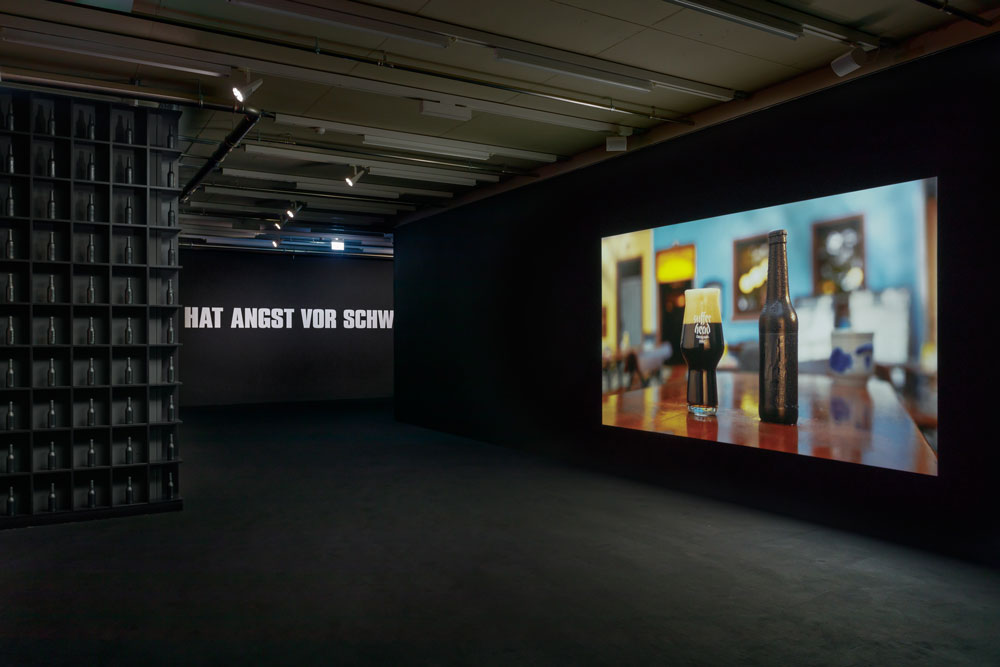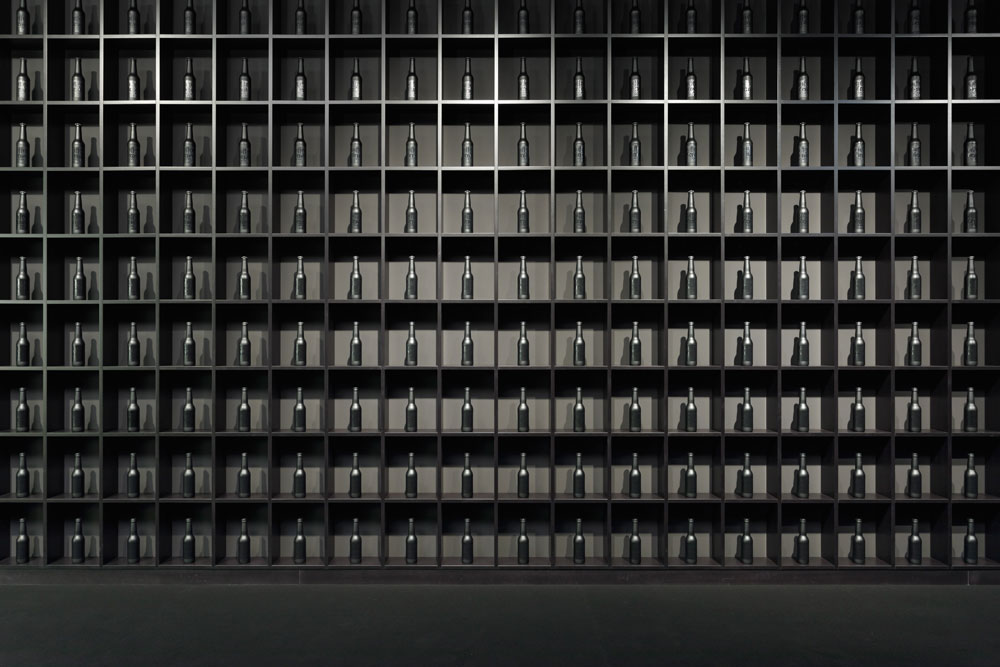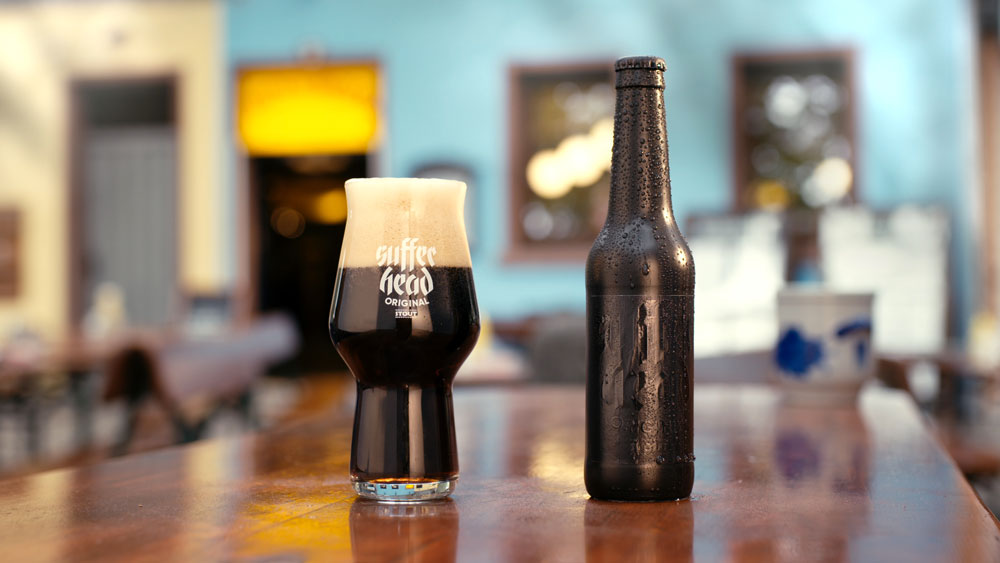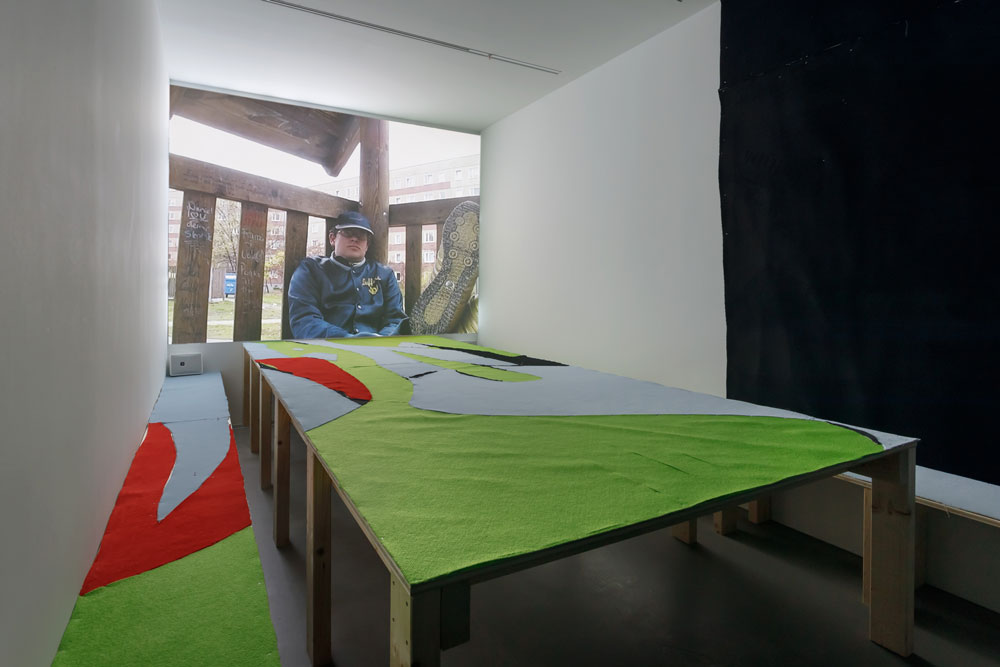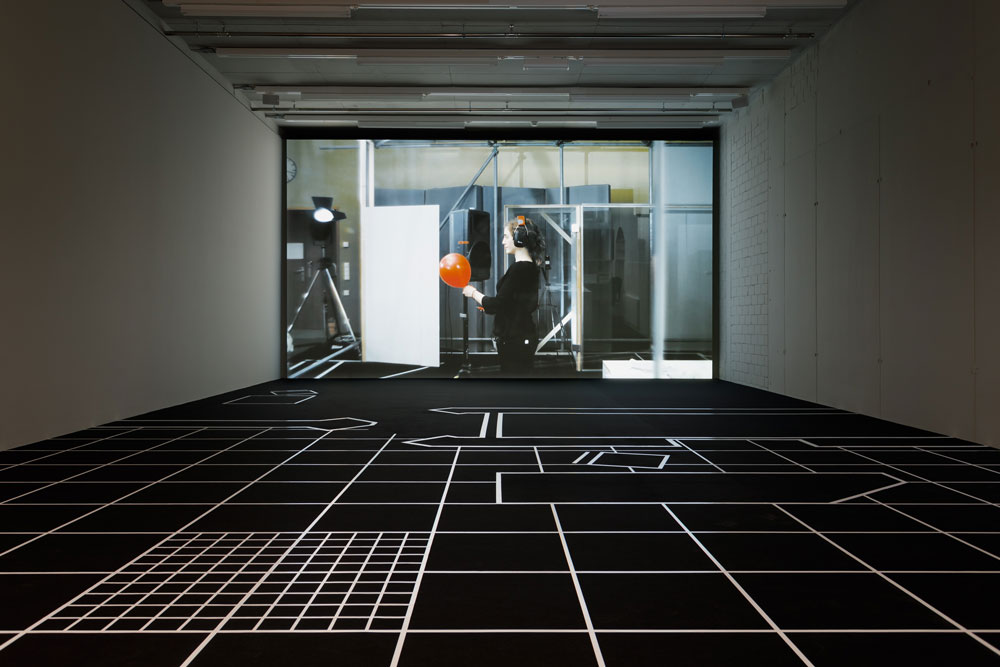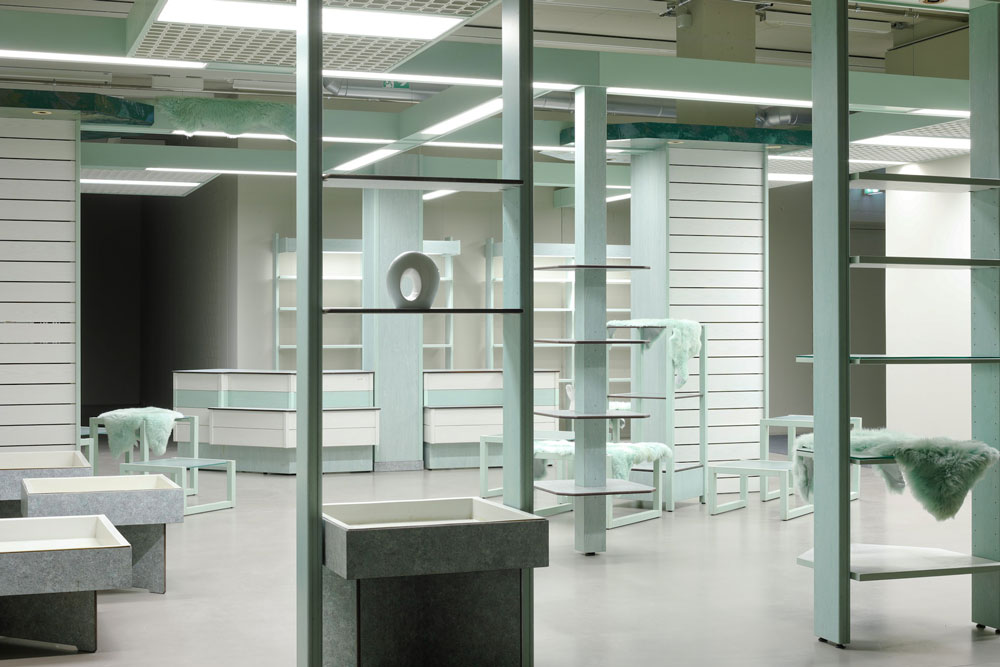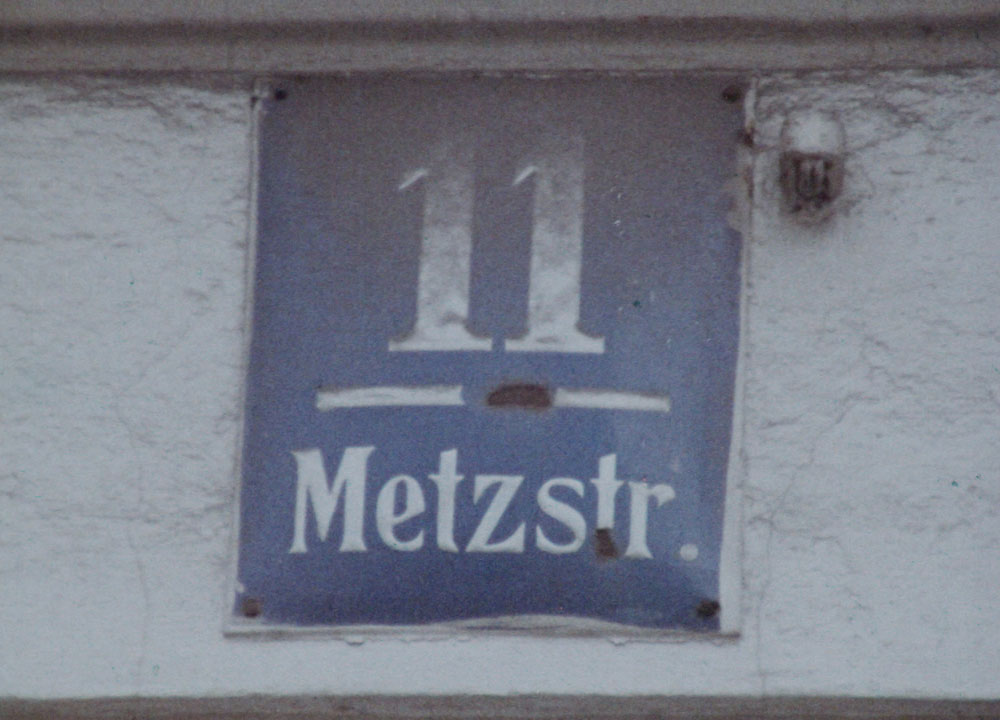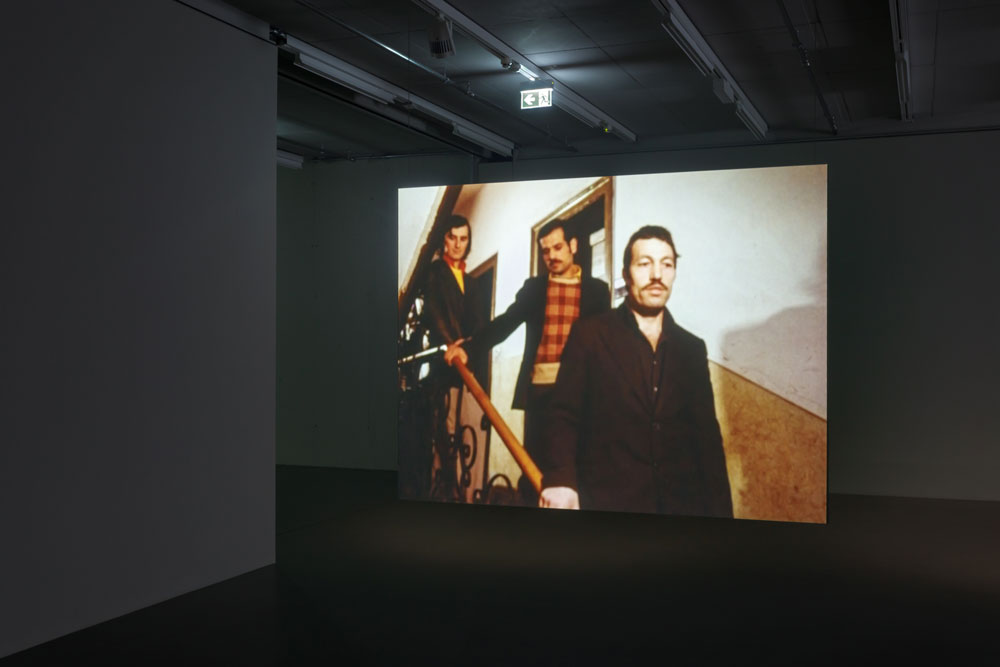ART CITIES:Frankfurt-Because I Live Here
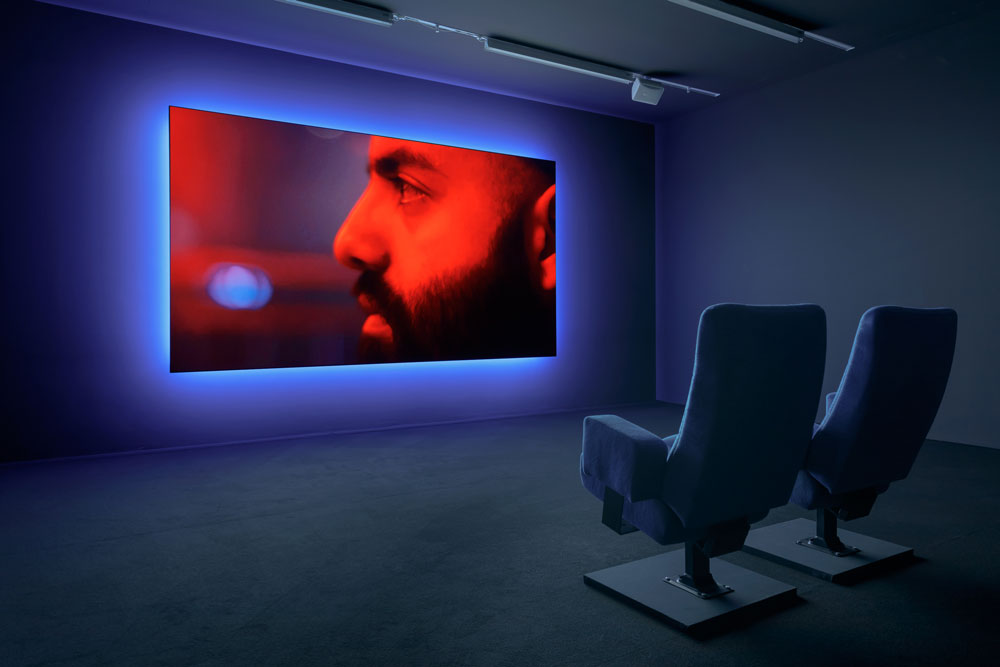 Neither purely artistic nor purely documentary in nature, the works in the exhibition “Because I live here” form a category of their own. They examine the structural and institutional racism and violence that represent an attack on our society. In the process, they document, supplement and question the construct of a national homogeneity in which racist violence, in all its forms, is commonplace, and at the same time a phenomenon of which supposedly unaffected persons are often not aware.
Neither purely artistic nor purely documentary in nature, the works in the exhibition “Because I live here” form a category of their own. They examine the structural and institutional racism and violence that represent an attack on our society. In the process, they document, supplement and question the construct of a national homogeneity in which racist violence, in all its forms, is commonplace, and at the same time a phenomenon of which supposedly unaffected persons are often not aware.
By Dimitris Lempesis
Photo: MMK-Frankfurt Archive
The group exhibition “Because I live here” features eleven artists and artist groups who address themselves to the themes of institutional racism and structural violence in Germany. Their works critically intervene in stereotypical depictions and images that have solidified into clichés. Using graphical illustrations from schoolbooks, history books, newspapers, and official government brochures, Harun Farocki’s “In-Formation” reconstructs a history of migration and immigration in the Federal Republic of Germany. The film does not deal with specific events but with the graphical depiction of statistical data involving the terms Gastarbeiter (migrant worker), Spätaussiedler (late repatriate), Flüchtling (refugee), and Asylanten (asylum seeker). Through his seminal critique of how migrants are portrayed, Farocki demonstrates how certain groups of migrants are characterized and a subtext is imposed on them. Masses of people with suitcases in their hands symbolize both the refugees and displaced persons resulting from WW II as well as people who fled the Soviet occupied zone, or immigrants from East Germany. Their places of origin and movements are shown with the kinds of arrow diagrams that also are used to visualize the Völkerwanderungen (the so-called barbarian migration of late antiquity), as well as plans of attack in war. The supposed impact of migration is shown with imagery similar to that used in Nazi propaganda about the effect of the Treaty of Versailles and concentration camps. This unbroken thread of repeated or similar illustrations makes clear how racist images and thought patterns are carried forward. The quick sequence of the images shows how apparently neutral and objective numbers are oriented towards a suggestion of attack or danger. Their manipulative and opinion-forming power is cultivated by statistical information in which respective groups are shown in a stereotypical manner. Men with thick beards and fezes and woman with headscarves or black chadors give these anonymous numbers a “face” , that is stigmatized. These are the recognizable symbols that personalize the notion of threat. Through the montage, the seemingly neutral information of the illustrations is unmasked as a one-dimensional cliché that becomes the vocabulary of our perceptions: a visual form of violence that bears witness to both structural and everyday racism. Forensic Architecture is an independent research agency based at Goldsmiths University and includes architects, artists, journalists, programmers, lawyers, and scientists. In “77sqm_9:26min” they reconstruct the sequence of events from April 6, 2006, with the help of a leaked police video. In this source material, Andreas Temme tries to demonstrate and prove that he did not hear the lethal shots, nor did he see Yozgat’s body behind the table or notice anything suspicious. Forensic Architecture worked with this police video and additional publicly available materials, such as protocols from questioning and documented telephone and Internet connections, which were key to the Yozgat case. They created a 1:1 scaled model of the crime scene and carried out a second reenactment of the situation (a reenactment of the reenactment or evaluation of the evaluation) with actors, which they also filmed. In their study and with the input of external experts, Forensic Architecture came to the conclusion that Andreas Temme must have seen the murderer or must have been involved in the murder himself. In the past, Forensic Architecture has given expert testimony a number of times in front of international courts and has presented the results of their research in these contexts. In the case of Halit Yozgat, a technical mistake made it impossible for them to present their conclusions as part of the NSU trial. Instead, parts of their evaluation were used when Andreas Temme was questioned before the parliamentary NSU Investigative Committee of the state of Hesse. Before the committee convened, this was sharply criticized by CDU Chairmann Holger Bellino, who did not want to admit a work of art by architects and actors as evidence in a legal process, since art makes no claim to reality. “Sufferhead Original (Frankfurt edition)” by Emeka Ogboh includes a beer specially brewed for Frankfurt, which is inspired by the tastes of Africans living in Germany, and an accompanying advertising spot. Tapping into the cliché of the “blonde” beer brewed according to Reinheitsgebot (purity requirements), the artist plays with and exposes racist thinking patterns of foreign vs. native, different vs. familiar, and pure vs. heterogeneous. Filmed at Frankfurt’s Affentorplatz (a square whose name literally translates as “monkey gate square”) the spot confronts the fears fanned by populism that “German culture is in danger of being overrun by immigrants”, by euphorically and energetically affirming them: the shift in consumption among “Germans” away from light, wheat beers to dark beer is celebrated as a triumph. But it leaves a bitter aftertaste. As soon as one becomes conscious of white-normative perspectives, pain sets in “Sufferhead”. Employing the blend of consumerism and sexism typical of advertising, the spot plays with notions of the exotic and racist biology. Here a Black waitress dressed in a dirndl à la Africaine promotes the NOH NEE brand and seductively encourages white male beer drinkers in polo shirts and plaid oxfords to shift their drinking tastes. It becomes clear that the men lust for her as much as for the cool, dark beer- mirroring another fear prevalent in right-wing thinking, which is unmasked in an affirmative twist. In a continuous shot by Želimir Žilnik, 30 residents of a building at Metzstrasse 11 in Munich appear in front of the camera and introduce themselves. In various languages they describe and assess their current lives and their very different experiences in Germany. Most came to Germany as so-called guest workers (Gastarbeiter), and thus the stairwell that serves as the setting for the film parallels the transitory space of the Federal Republic of Germany in 1975. Just a few years prior, during the global oil crisis in 1973, the recruitment agreements by which foreign workers had been brought to West Germany since 1955 were terminated. These agreements had aimed to improve the economic situation of West Germany and its “partners,” Italy, Spain, Greece, Turkey, Morocco, Portugal, and Yugoslavia. The film’s title “Inventory – Metzstrasse 11”, suggests a statistical and economic stocktaking of anonymous and invisible entities, in which people are reduced to numbers. Correspondingly, the residents of the building stand in a line on the stairs, as if being counted. In a contrasting gesture, Želimir Žilnik uses this simple setting to offer individual portraits of these people, allowing them to speak about their lives and experiences that can never be conveyed by abstractions and numbers.
Participating artists: Harun Farocki , Azin Feizabadi, Forensic Architecture, Natasha A. Kelly, Erik van Lieshout, Henrike Naumann, Emeka Ogboh, spot_the_silence, SPOTS, Hito Steyerl and Želimir Žilnik.
Info: Museum für Moderne Kunst, Tower MMK, TaunusTurm, Taunustor 1, Frankfurt am Main, Duration: 27/10/18-31/3/19, Days & Hours: Tue & Thu-Sun 11:00-18:00, Wed 11:00-20:00, www.mmk.art
